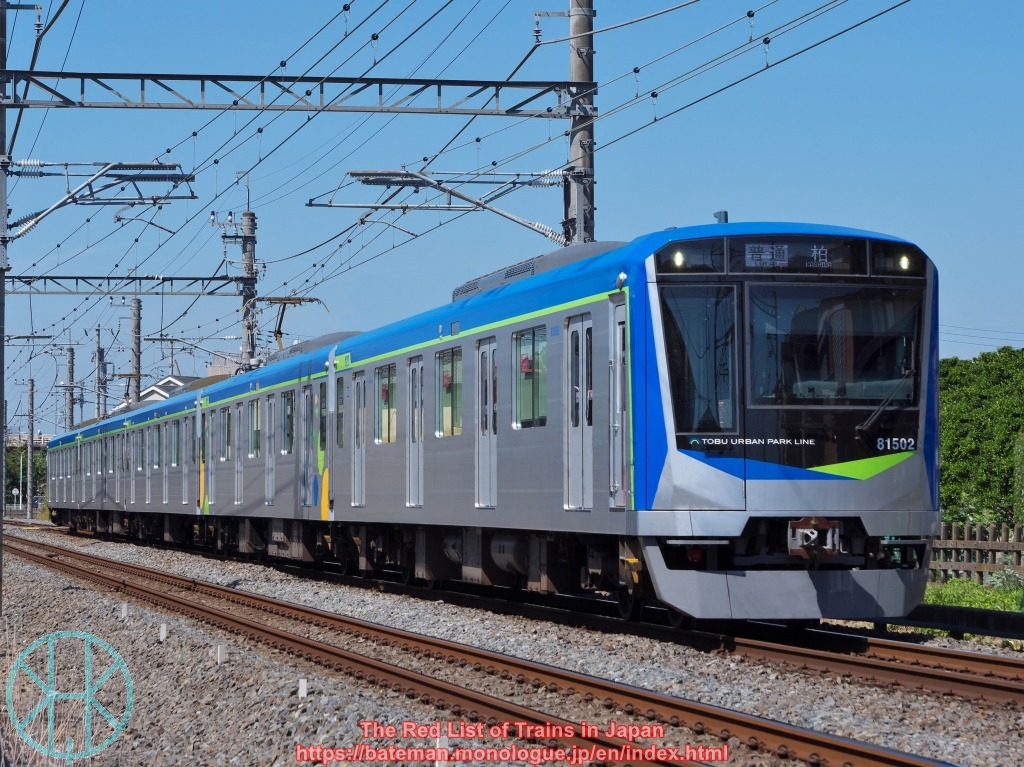Train companies in Japan provide various types of service, ranging from cheap slow trains to expensive but fast trains. Generally speaking, Futsu (普通, meaning "standard" "normal" or "ordinary", often referred to as "Local" in English) is the slowest one amongst all, calling at all stations. Kaisoku, (快速, often referred to as "Rapid" in English), is usually a semi-fast service that does not charge extra fares. However, there were a few Local trains that called at fewer stations than Rapid trains.
Chuo Main Line
Chuo Main Line in Tokyo is one of the busiest commuter railways in the country. Orange commuter trains run mainly between Tokyo and Takao, operating as rapid or special rapid. In addition, yellow commuter trains run between Ochanomizu and Mitaka, which are labelled Kakueki Teisha (各駅停車, meaning "stopping at all stations", also often referred to as "Local" in English). The line from Takao to the west is mostly served by shorter suburban trains, and services there are called Futsu (already confusing).
Until the last day of November 1993, there were a few Futsu services to and from Shinjuku, provided by blue and white suburban trains. Despite being called Futsu (Local), they stopped at fewer stations than rapid services or even special rapid services. Service patterns of orange commuter trains were the same as those of today, but the Futsu trains stopped only at Mitaka, Tachikawa, Hachioji and Takao. The trains did not even stop at Mitaka before 1986.
The table below shows Chuo Line service patterns in 1993 (weekdays). Rapid services called at all stations on the list.
| Special Rapid | Futsu |
|---|
| Shinjuku | ✓ | ✓ |
|---|
| Koenji | | |
|---|
| Asagaya | | |
|---|
| Ogikubo | | |
|---|
| Nishi-Ogikubo | | |
|---|
| Kichijoji | | |
|---|
| Mitaka | ✓ | ✓ |
|---|
| Musashi-Sakai | | |
|---|
| Higashi-Koganei | | |
|---|
| Musashi-Koganei | | |
|---|
| Kokubunji | ✓ | |
|---|
| Nishi-Kokubunji | | |
|---|
| Kunitachi | | |
|---|
| Tachikawa | ✓ | ✓ |
|---|
| Hino | ✓ | |
|---|
| Toyoda | ✓ | |
|---|
| Hachioji | ✓ | ✓ |
|---|
| Nishi-Hachioji | ✓ | |
|---|
| Takao | ✓ | ✓ |
|---|
Due to an increased demand for commuter trains and congestion, the Futsu trains between Shinjuku and Takao were replaced with more frequent Chuo Tokkai special rapid services on 1 December 1993.
Joban Line
In addition to Kakueki Teisha (Local, all-stations) services between Ayase and Toride, Futsu services that were faster than rapid services had also existed on Joban Line until March 2004. The rapid services call at Nippori, Mikawashima, Minami-Senju, Kita-Senju, Matsudo, Kashiwa, Abiko, Tennodai and Toride. Meanwhile, Futsu services did not stop at Mikawashima and Minami-Senju during rush hours. The Futsu services called at even fewer stations before 1988, and some of them overtook rapid trains. They were extremely confusing especially for those who were not familiar with the line.
Since March 2004, all Futsu services stop at Mikawashima and Minami-Senju stations. As both the Futsu and rapid have become effectively the same, JR East incorporated the Futsu to rapid services in October 2004.
Why were there such confusing Local trains?
In both cases, Futsu trains were faster than rapid trains. To understand these tricky cases, it is essential to understand subtle and confusing differences between Japanese terms.
Traditionally, Futsu in the Greater Tokyo Aera was classified into ressha (列車), while rapid and Kakueki Teisha were classified into densha (電車). Generally speaking, both ressha (列車) and densha (電車) mean "train", but to be specific, densha means "electric train" for short-distance services with many stops. In other words, densha is just one form of ressha. Other types of ressha include, for example, diesel trains, limited express trains and freight trains. Thus, Futsu has been classified into a different category to rapid or Kakueki Teisha.

Historically, ressha usually meant coach trains hauled by locomotives. Most such trains were hauled by steam locomotives before the Second World War, which were heavy with poor acceleration and braking, and thus unsuited for services in urban areas which require frequent acceleration and deacceleration. Electric multiple units (densha), which were lighter and had far better acceleration and swift braking, became common in Tokyo by the 1930s, but they were costly and not reliable enough for long-distance services. Hence, electric trains were mostly used for short-distance services (i.e. commuter railways) with many stops, while loco-hauled trains were used for middle to long-distance services with fewer stops.
Japanese National Railways introduced electric multiple units to long-distance services in the early-1950s and gradually replaced locomotives and coaches, but the distinction of ressha and densha remained unchanged. It is also worth noting that long-distance Futsu services remained until the 1980s. For example, there were a few local (Futsu) services running between Ueno and Sendai via Mito until 1982.
Even after the privatisation of JNR, the remnant of the old days existed for nearly 20 years. This is why there were Futsu local services with fewer stops than rapid or even special rapid services on Chuo and Joban Lines. This is a good example of how historical legacies affected Japanese railways, though they have mostly disappeared today.



















































